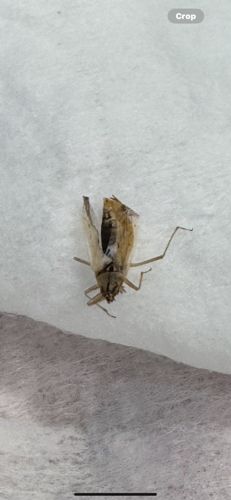Plant Hopper
Scientific Name: Varies widely by species within the Fulgoroidea superfamily; a precise scientific name without closer examination or location information is not possible.
Order & Family: Order: Hemiptera (True Bugs, Cicadas, Aphids, and Hoppers), Suborder: Auchenorrhyncha (Free-living Hemipterans), Superfamily: Fulgoroidea (Planthoppers) - specific family cannot be determined from this image alone but could include Fulgoridae, Delphacidae, Cixiidae, etc.
Size: Typically range from 2 mm to 30 mm, depending on the specific family and species. The specimen appears to be in the smaller to medium range.

Natural Habitat
Found on various plants including grasses, shrubs, trees, and cultivated crops. Their habitat depends on the specific plant host they feed on.
Diet & Feeding
Plant sap (various plant species, depending on the specific family/species of planthopper). They use piercing-sucking mouthparts to extract sap. Some are specialists, others generalists.
Behavior Patterns
Adults are active flyers, especially at night, and are attracted to lights. They are typically found near their host plants. Larvae are active and feed on plant tissues, often causing damage.
Risks & Benefits
Potential risks include being agricultural pests, as they can transmit plant diseases (e.g., viruses, phytoplasmas) and cause direct feeding damage to crops, leading to significant yield losses. Some species are considered invasive pests in certain regions. Benefits include being a food source for other insects, birds, and small animals, and contributing to nutrient cycling in ecosystems.
Identified on: 8/9/2025